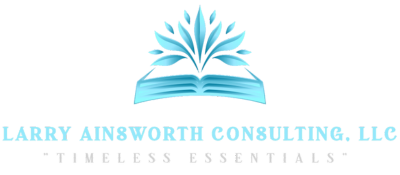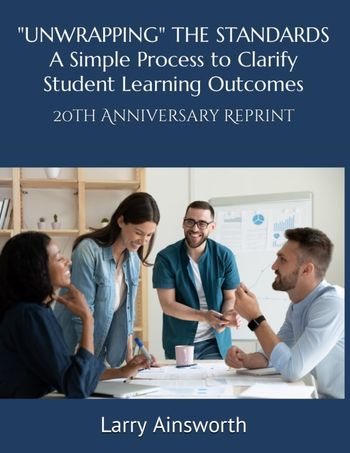November 21, 2023 9amLarry Ainsworth
Amazon Link to book: https://tinyurl.com/354perdj
It’s TIMELESS! 20 years later and still going strong!
In this 20th anniversary reprint of the 2003 original edition, with a new subtitle, “Unwrapping” the Standards, A Simple Process to Clarify Student Learning Outcomes, Larry Ainsworth guides educators through each phase of the “unwrapping” standards process. Sharing the stories of K-12 educators and leaders across the country who have successfully implemented this process, Larry convincingly explains why “unwrapping” standards continues to be a “timeless” practice to elevate teaching and learning.
“Unwrapping” the standards is a simple but powerful practice to help educators clarify what students need to know and be able to do from the wording of the standards. When educators take the time to analyze each standard and identify its essential concepts and skills, the result is more effective instructional planning, higher quality assessment design, and improved student learning.
Overview of the “Unwrapping” Process
Each part of the four-step process is fully described and illustrated with numerous examples. Here is a quick overview:
1. “Unwrap” the Standards. Analyze and deconstruct the targeted standards within each individual unit of study to identify and clarify the specific, teachable concepts and skills (what students need to know and be able to do) in those standards.
2. Create a Graphic Organizer. Next, prepare a graphic organizer (outline, bulleted list, concept map, or chart) as a visual display of the “unwrapped” concepts and skills.
3. Decide the Big Ideas. Referring to the “unwrapped” concepts, then decide the Big Ideas (key understandings, student “aha’s”) you want the students to discover on their own by the end of the unit of study.
4. Write the Essential Questions. Lastly, referring to the Big Ideas, write open-ended Essential Questions that will engage students to discover for themselves the related Big Ideas and be able to state them in their own words by the end of the unit.
Though the entire “unwrapping” process was developed in response to the need for a more effective way to manage the standards, essentially this is just good teaching. For years, educators have told me that this technique helps them (1) clarify what is important for students to learn from the formally written standards (“unwrapping”), (2) help students make connections to other areas of study and utilize higher-level thinking skills (Big Ideas), and (3) engage students in wanting to learn the standards by setting a purpose for learning (Essential Questions). States and provinces may continue to change or update their own standards and related high-stakes accountability tests, and yet educators will still utilize this powerfully “timeless” method because it is simple, practical, and because it works!
Key features of this 20th anniversary reprinted book include how to:
• Clarify specific concepts and skills students need to know and be able to do from the wording of the standards
• Represent the “unwrapped” concepts and skills on a graphic organizer of choice
• Determine Big Ideas (the “aha’s” or “lightbulb” moments of understanding) teachers want students to discover as they learn the “unwrapped” standards
• Write Essential Questions that actively engage students and promote their own discovery of the Big Ideas.
• Increase understanding of the complete process with over 80 examples of “unwrapped” standards in multiple content areas across the four grade spans (K-2, 3-5, 6-8, and 9-12). Chapters 5 through 8 showcase these examples specific to primary grades, upper elementary grades, middle school grades, and high school grades and courses.
Plus, a time-saving feature included in the book! Ready-to-use checklists and templates to help educators immediately apply this simple, proven technique for clarifying the standards!

